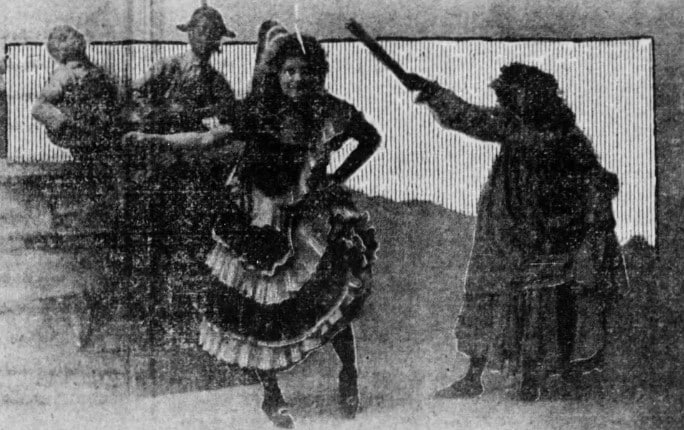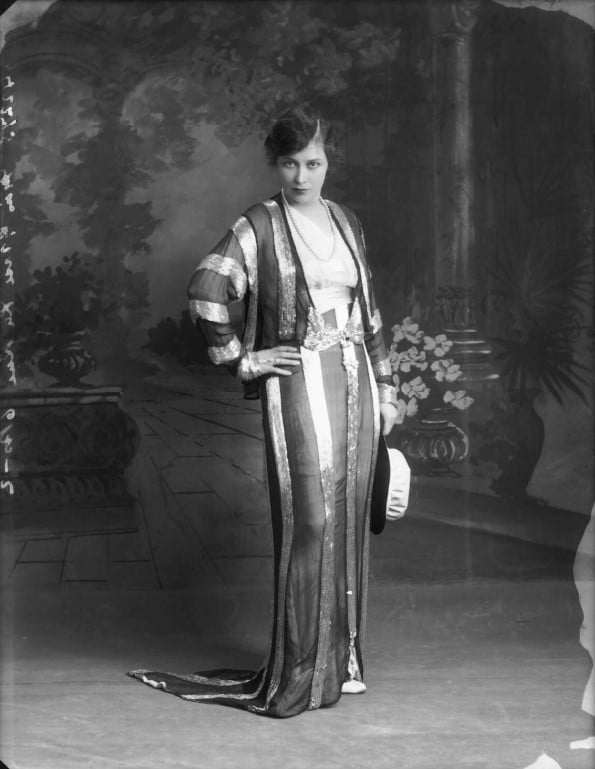Grace La Rue: A Dazzling Star In The Early 20th Century
Grace La Rue was a shining star in early 20th-century entertainment. Blessed with a talent for singing, dancing and acting, she captivated audiences worldwide.
Through her career in Vaudeville, Grace unhesitatingly collaborated with black comedians, challenging racial barriers in show business. Her bold choices not only challenged norms but also paved the way for diversity in the entertainment industry.
Grace’s rise from humble beginnings

Born on April 23, 1882, on a modest Missouri farm near Kansas City, Grace didn’t let poverty deter her dreams. With a natural gift for singing, she sought out the best training she could find.
At nine, she started her stage career in Shakespearean repertory. By 1906, she made her Broadway debut in “The Tourist” alongside stars like Julia Sanderson and Lillian Lorraine. The following year, she shone in the Ziegfeld Follies of 1907 and 1908. Her journey to success was both rapid and impressive.
Grace La Rue recalled, “When I was 11 years old as a child soprano, singing the Psalms at the Grand Avenue Church, Kansas City, and I made my theatrical debut one year later in the same city, as a page in Julia Marlowe’s production of ‘As You Like It.’
My initial traveling engagement came the following year when the Milton Nobles stock company signed me up to play boy parts. But alas, before two weeks had passed I experienced such a teary attack of homesickness that I was promptly sent home to mother.”
“And there I stayed very willingly until the call from a stock company in Pittsburgh. From playing boy and girl parts with this organization I went to Denver for a dramatic stock season. And then I retired from the stage forever… and seriously committed to the study of music. But in 10 months I was in Vaudeville.”
Grace’s bold collaboration, breaking racial barriers

Back in the early 1900s, before television and radio dominated, people’s entertainment choices were pretty limited. They mostly stuck to shopping, church, public meetings, and Vaudeville shows. Vaudeville was a big hit back then because it offered something for everyone – it was family-friendly but also had a bit of edgy humor
Grace La Rue was a perfect fit for Vaudeville. She could do it all: sing, dance, act, and even pull off acrobatic moves. Her singing voice was praised as one of the best in the world.
During the early days of Vaudeville, racial prejudice was rampant. African-Americans faced severe discrimination, with nearly no place in the Vaudeville, especially in white areas. This era was marked by black-faced minstrel shows, where white performers darkened their skin to portray Black characters.
It’s reported that while many Vaudeville performers refused to appear on the same stage with actual African-Americans, Grace La Rue did not hesitate to perform with the Inkey Boys, a Black comedy group.
Their collaboration was initially controversial but surprisingly successful. Audiences were drawn to the novelty of a talented white performer alongside Black comedians.
La Rue did not care how the press labeled them with derogatory terms like “pickaninnies”, she continued teaming with them, achieving significant box office success.
They worked together until La Rue got the call from Ziegfeld to join the Follies in 1907.
Glittering career

La Rue first appeared as a Vaudeville single act in November 1912 at Poli’s in Springfield, Missouri. Her performances included an aria from Madame Butterfly and a duet with a recording of Enrico Caruso. Variety praised her, noting her “Parisian cultivated voice.”
She debuted at the Palace Theatre on August 4, 1913, featuring the song “You Made Me Love You (I Didn’t Want to Do It)” from the musical Honeymoon Express, where she had previously performed alongside Al Jolson.
Later that year, she took her act to the UK, performing at the London Palace and making gramophone recordings of her popular songs.
In 1919, La Rue made her screen debut opposite American stage and film actor Hale Hamilton in the melodrama That’s Good. She married Hamilton on May 29, 1920, amid a whirl of controversy surrounding a lawsuit filed by Hamilton’s second wife, actress Myrtle Tannehill.

Grace La Rue began her screen career in 1919 alongside Hale Hamilton in the drama “That’s Good.” Their marriage in 1920 was marked by controversy due to legal issues involving Hamilton’s previous wife, actress Myrtle Tannehill.
La Rue continued her career with notable performances in Irving Berlin’s Music Box Revue in New York (1922-1923) and later appeared at the Coliseum in London in 1924.
In the 1920s, Grace La Rue performed in vaudeville, musical comedies, and revues across the United States.
She had a notable role in the 1928 Greenwich Village Follies at the Winter Garden Theatre. Later, she appeared in the 1933 Mae West film “She Done Him Wrong” before retiring to California.
Grace La Rue passed away on March 13, 1956, at Peninsula Hospital in Burlingame, California.

